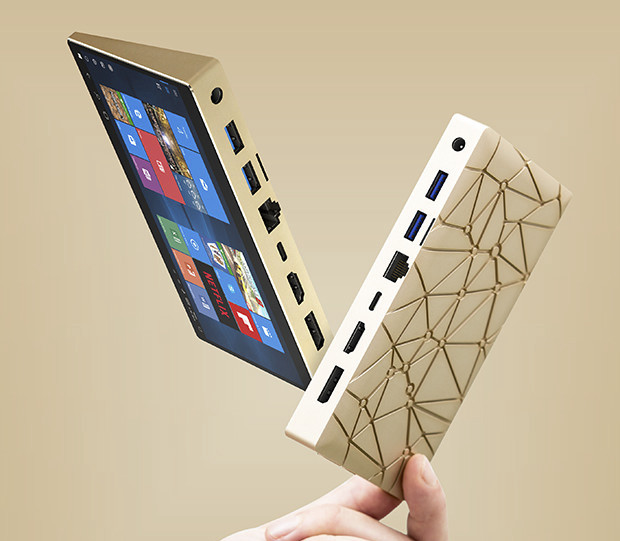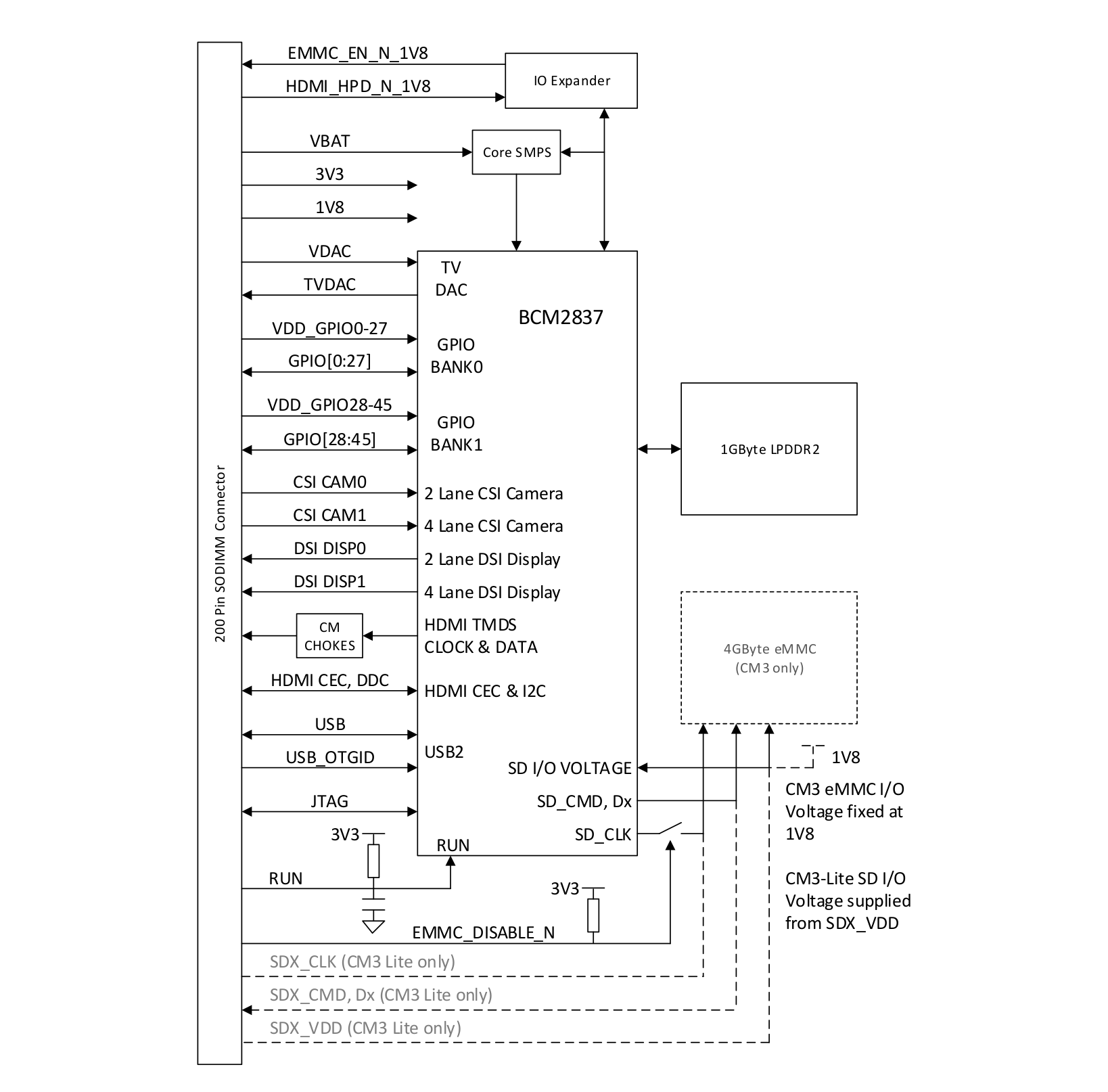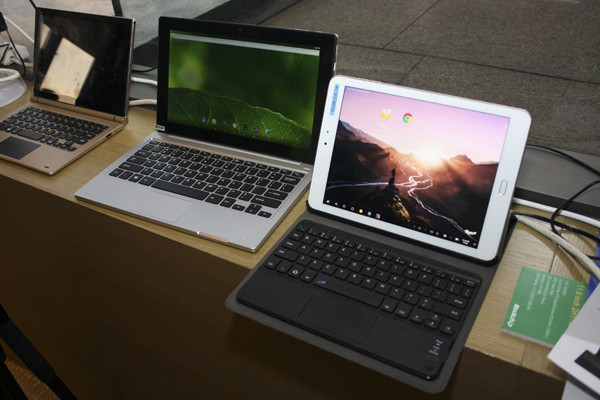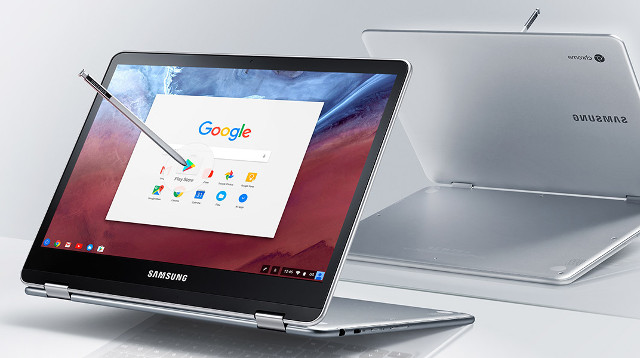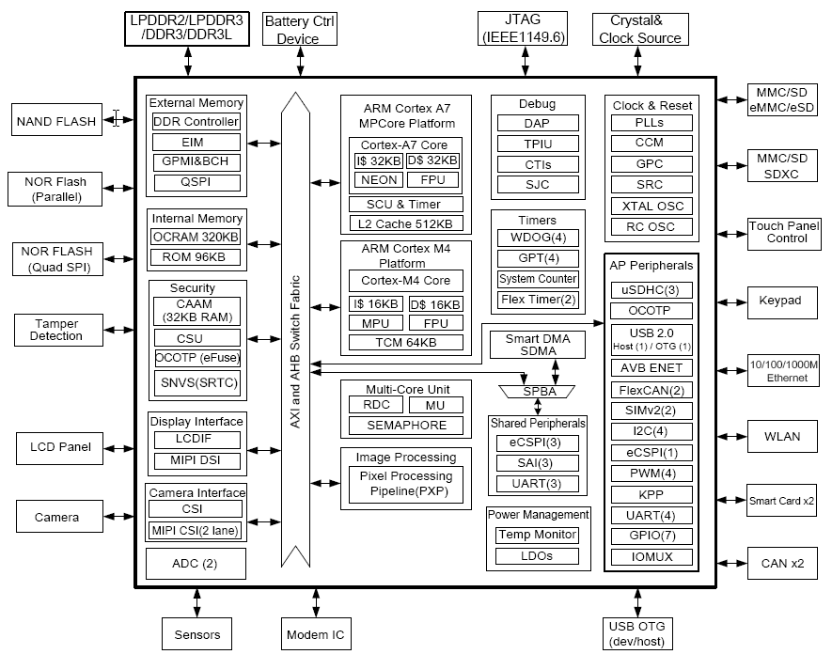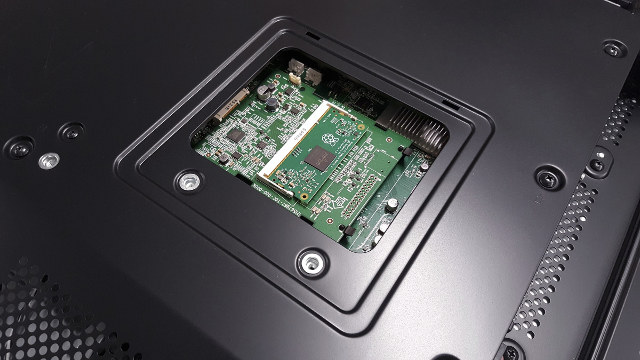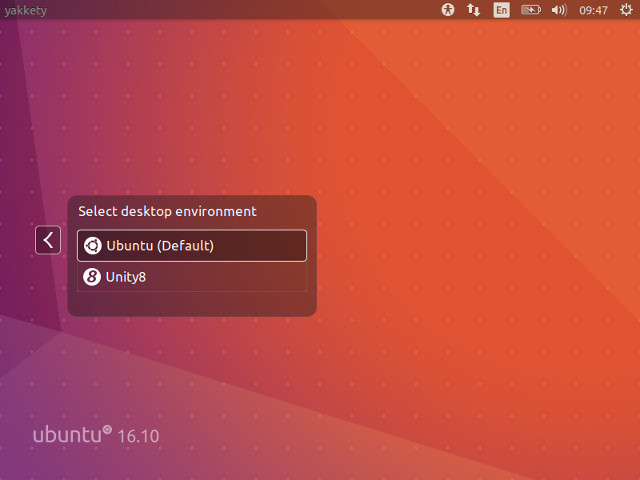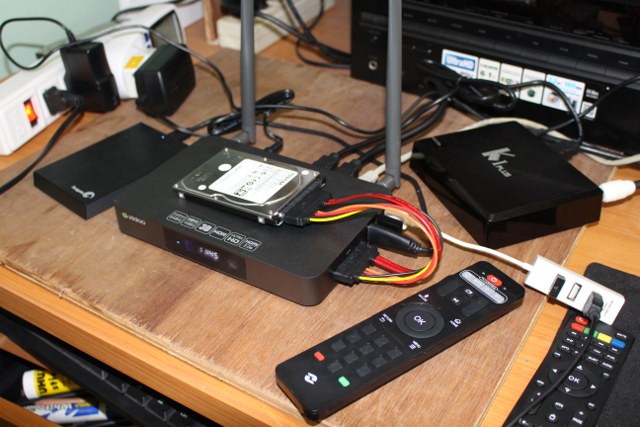GOLE1 is a Windows 10 + Android mini PC powered by Intel Atom x5-Z8300 processor that also happens to come with a 5″ 720p display and a battery with the 4GB RAM/64GB storage version selling for $155 shipped. A company called Ockel Computers, who had a surprisingly successful crowdfunding campaign last year for their Sirius B Cherry Trail mini PC having raised close to $500,000, has designed a new mini PC similar to GOLE1, but with better specs including a slightly faster Intel Atom x7-Z8750 processor, a higher resolution 6″ display, and HDMI & DisplayPort video output ports among other improvements. Ockel Sirius A specifications with bold highlights showing improvements over GOLE1 mini PC: SoC – Intel Atom x7-Z8750 “Cherry Trail” quad core processor @ 1.60 GHz / 2.56 GHz with Intel Gen8 HD graphics (2W SDP) System Memory – 4 GB LPDDR3L-1600 Storage – 64 GB eMMC flash + […]
Raspberry Pi Compute Module 3 (CM3) and Compute Module 3 Lite (CM3L) Datasheet Released
Last week NEC announced they were going to use Raspberry Pi Compute 3 Module in some of their presentation and digital signage displays. This led to a longish discussion in the blog post, during which one commenter left a link to Raspberry Pi Compute Module 3 datasheet, so let’s have a look. There will actually be two version of the Broadcom BCM2837 based Compute Module with CM3 with a 4GB eMMC, and CM3 Lite (CM3L) without eMMC, but SD card signal are available to the baseboard. Apart from storage differences, both modules shared the same specifications: SoC – Broadcom BCM2837 quad core Cortex A53 processor @ 1.2 GHz with Videocore IV GPU System Memory – 1GB LPDDR2 Storage CM3 Lite – SD card signals through SO-DIMM connector CM3 – 4GB eMMC flash 200-pin edge connector with: 48x GPIO 2x I2C, 2x SPI, 2x UART 2x SD/SDIO, 1x NAND interface (SMI) […]
iFive and Techvision Rockchip RK3399 Hybrid Tablet/Laptop to Run Android 6.0 or Remix OS 3.0
We’ve seen Samsung is about to release the first Rockchip RK3399 Chromebook to the market. However it will be selling for $499, possibly a bit more than many people are ready to pay for such device, so Rockchip RK3399 powered iFive and Techvision 2-in-1 hybrid laptop & tablet devices showcased at the Hong Kong Electronics Fair might be worth a look as they should be quite cheaper. The solution from Techvision ODM design house is a proper 2-in-1 hybrid laptop with a 11.6″ detachable screen with 1920×1080 resolution, two USB ports, a USB Type-C port and HDMI 2.0 output. The laptop also includes 2GB RAM, and 16GB flash. iFive model is more like a 9.7″ tablet sold with a keyboard acting as a tablet stand, and connecting with the tablet through pogopins. Beside the 4K display, the tablet also features 4 speakers, an audio jack, a USB 3.0 type C […]
Samsung Chromebook Pro Powered by Rockchip RK3399 SoC to Sell for $499
Considering Linux kernel commits related to RK3399 processor almost always involves developers with a chromium.org email address, beside rock-chip.com ones, we had to expect a Rockchip RK3399 based Chromebook sooner or later, and based on various leaks, Samsung Chromebook Pro appears to be one the RK3399 Chromebooks to come to market very soon. We’ll see some of the key features and pictures, and technical details on websites such as Adorama, so we can have a pretty good idea of Chromebook Pro OP1 / 513C24I specifications, even though Samsung and Google have yet to officially launch the device: SoC – Hexa core processor with 2x ARM Cortex A72 cores @ up to 2.0 GHz, 4x ARM Cortex A53 cores (Which has to be Rockchip RK3399 SoC, or a special RK3399-C specific to Chromebooks) System Memory – 4 GB LPDDR3 RAM Storage – 32 GB eMMC Flash Storage Display – 360°-rotatable 12.3” LED […]
HMP, Real-Time Linux and Xenomai – A Look at Three Options to Develop Real-Time Linux Systems on Application Processors
This is a guest post about Heterogeneous Multicore Processing (HMP), Real-Time Linux, and Xenomai to develop real-time Linux systems written by Guilherme Fernandes, Raul Muñoz, Leonardo Veiga, Brandon Shibley, all working for Toradex. Introduction Application processor usage continues to broaden. System-on-Chips, usually powered by ARM Cortex-A cores, are taking over several spaces where small ARM Cortex-M, and other microcontroller devices, have traditionally dominated. This trend is driven by several facts, such as: The strong requirements for connectivity, often related to IoT and not only from a hardware point of view but also related to software, protocols, and security The need for highly interactive interfaces such as multi-touch, high-resolution screens, and elaborate graphical user interfaces; The decreasing price of SoCs, a consequence of its volume gain and new production capabilities. Typical cases exemplifying the statement above are the customers we see every day starting a product redesign upgrading from a microcontroller […]
Raspberry Pi Compute Module 3 to be launched by the end of the year, used in NEC displays
Eben Upton had already mentioned the Raspberry Pi Foundation was working on a Raspberry Pi Compute Module 3 based on the same Broadcom BCM2837 quad core Cortex A53 processor and 1GB LPDDR2 RAM used in Raspberry Pi 3 board earlier this year, but few details had been provided at the time. The module is still not available, but NEC Display Solutions Europe has already announced they are working on integrating Compute Module 3 into commercial displays starting with 40″, 48″ and 55″ models in January 2017, and up to 98″ by the end of next year, used for digital signage and presentation platforms. The Raspberry Pi Foundation goes on to say they’ve been working on NEC project for over a year now, and they expect to release Compute Module 3 to the general public by the end of the year. Price and complete technical details have not been released yet. […]
Ubuntu 16.10 Images Released for Intel Bay Trail and Cherry Trail Processors
Canonical formally released Ubuntu 16.10 “Yakkety Yak” yesterday with a developer preview of Unity 8 including desktop, tablet and phone UX convergence, Hybrid cloud operations with Juju 2.0, Snapd 2.16 with more than 500 snaps, etc.. Ian Morrison (Linuxium) wasted no time, and put together a Ubuntu 16.10 image working on platforms powered by Intel Bay Trail and Cherry Trail processor with modifications to have audio, WiFi and Bluetooth working. If you want to try Ubuntu 16.04 on your device you can download ubuntu-16.10-desktop-linuxium.iso and prepare a bootable USB flash the usual way with rufus, or other utilities. If you’d like to try an alternative Ubuntu flavor such as Lubuntu, Xubuntu, Kubuntu, Ubuntu GNOME, or Ubuntu MATE, Linuxium got you served too, and you’ll find the images on his blog. Unity 7 is still running by default in Ubuntu 16.04, but if you are curious about Unity 8 convergence desktop/tablet/phone user […]
Zidoo X9S Android Media Center Review – Part 2: Android Firmware & OpenWrt (NAS Functions)
Zidoo X9S is more than a simple Android TV box, as it supports NAS function via OpenWrt running simultaneously with Android 6.0 and its USB 3.0 and SATA ports, as well as HDMI input function capable of recording and broadcasting videos, and supporting Picture-in-picture, so I find “Android Media Center” better fit the description for this device. I’ve already taken pictures of the Zidoo X9S and its board in the first part of the review, so I’ll test both Android 6.0 & OpenWrt firmware, and the most of the features in the second part of the review. Initial Setup and First Boot I connected the usual accessories and cables to the box including a USB 3.0 hard drive, HDMI and Ethernet cables, USB RF dongles for MINIX NEO A2 Lite air mouse and Tronsmart Mars G01 gamepad, and a USB keyboard to take screenshots. I also added a 1TB SATA […]


